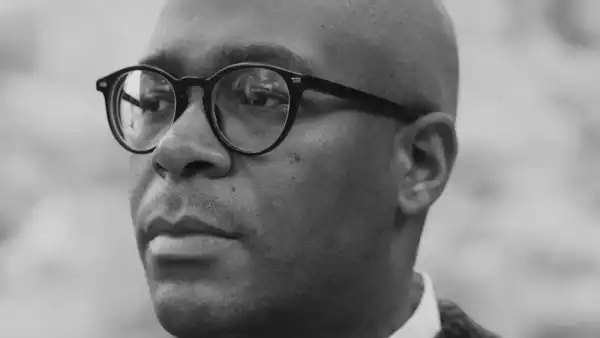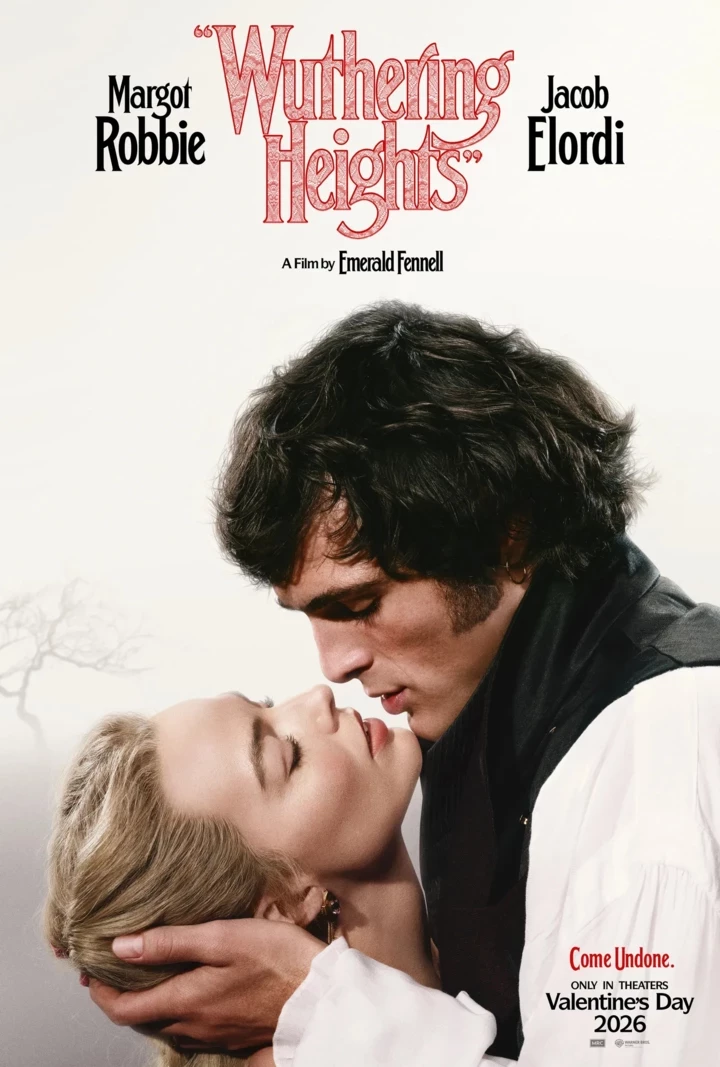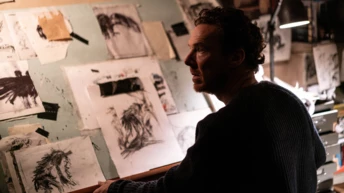
Save this storySave this storySave this storySave this story
During my time as a graduate student, I encountered a professor—a well-regarded dissenter in his discipline—who liked to present the “Negro sunset” quandary. From what I can remember, it stemmed from a famous article by Langston Hughes titled “The Negro Artist and the Racial Mountain,” which appeared in 1926. Within its pages, Hughes voices embarrassment “for the colored artist who runs from the painting of Negro faces to the painting of sunsets.” In Hughes’s view, a Black artist who neglected to find subjects suitable for aesthetic representation within their own community was shirking their heritage. While Hughes was constructing a case pertinent to his era, the fundamental premises surrounding the ambitions and authentic essence of “Negro art” persist in challenging contemporary perceptions. What about the Black artist who, akin to numerous artists before them, possesses personal motivations for depicting nature? Could something akin to a Negro—or Black, in modern terminology—sunset even exist? And if so, what characteristic, aside from the artist’s origin, would qualify it as such? Moreover, if identity serves adequately in defining the artistic creation, what facets of it are disregarded throughout the process? On a related note, what about “the painting of Negro faces”? We should assume that artist is also driven by their particular reasons—considerations that might be misinterpreted or misunderstood owing to their ethnicity.
“Minor Black Figures,” Brandon Taylor’s most recent novel, places such queries within the mind of a budding painter named Wyeth. The narrative unfolds in recent times, assimilating the so-called racial reevaluation of 2020 and its ongoing impact. Wyeth has discovered that his earlier works—modestly scaled compositions inspired by European art-house cinema featuring Black figures—convey either insufficient or excessive significance when examined through the limited perspective of what he reluctantly terms “the moment.” (“What exactly is the moment?” another character, similarly an artist, retorts.) As the story commences, Wyeth resides in New York, endeavoring to become a “different kind of artist,” one whose oeuvre aligns with that moment, irrespective of its permissible implications for a Black artist whose output is automatically laden with predetermined interpretation. He harbors no inclination toward exploiting identity and feels annoyance toward his colleagues who seem comfortable in doing so; nevertheless, he is highly conscious that his disavowal amounts to a form of exaggerated denial. Concurrently, pursuing art in New York mandates generating income, which, for Wyeth, entails holding day positions adjacent to the arts within commercial establishments that impinge on his artistic expression. Amidst all this, at a bar one humid evening, Wyeth crosses paths with Keating, a seminarian on a temporary absence whose spiritual quandary intertwines with his own.
There’s an underlying, historical awareness pervading “Minor Black Figures” that signals a change in Taylor’s creative output. His prior works—the novels “Real Life” (2020) and “The Late Americans” (2023), plus the short-story anthology “Filthy Animals” (2021)—are built around the interconnected social circles of their characters on campus grounds. They are situated in towns of the Midwest and are inclined toward intimate scenes that subdue the wider world. By contrast, “Minor Black Figures” launches with society at its loudest as a minor individual, Wyeth, navigates through it. It’s a classic technique, as the author is aware and embraces. During a recent discussion, he mentioned the Marxist literary theorist György Lukács as an influence. “I feel that in many respects the contemporary novel has discarded much of its finest, most advanced technology,” Taylor said to me. “I really have a desire to create a book that could capture at least a glimpse of a social totality and employ a single character to articulate some of the urgent matters of his time.”
Taylor and I also discussed illogical interpretations of race, our shared antipathy for biographical analysis, and why Catholics continue to captivate attention. The ensuing dialogue has undergone editing and shortening.
I was curious to know your perspective on the issue of what qualifies Black art as “Black art.” Has this novel aided you in progressing through that difficulty?
It’s akin to Schrödinger’s Black artist, I suppose. Let me clarify my meaning. When one asserts that a certain Blackness permeates art, there is a component of that declaration that resonates with me and appears to possess considerable logic. Nevertheless, I’m inclined to ask, “If a white individual had produced the same work, would you still perceive it similarly?” Consequently, are we fundamentally projecting an external characteristic onto the art created by Black individuals? And if that holds true, does that not possess an element of the surreal, the uncanny? Isn’t there an inherent sense of unreason in that approach?
And from there, I find myself caught in this line of reasoning, contemplating, “But what if there is a level of unreason involved?” Black individuals, particularly in America, have suffered the horrors of history. Does that not allow for the presence of unreason? Does it not afford space for different viewpoints that exist beyond Western knowledge and experiences—white or non-Black experiences? I believe the book seeks to address the question, “What constitutes Black art?” What are the implications of painting a Black subject or painting as a Black individual? It is an effort to examine the occurrence of Black subjectivity in a manner that allows for both the rational and irrational dimensions of that experience, as that aligns with my own feelings. I am perpetually oscillating between reason and unreason.
Even when functioning as a critic, it seems that being a Black woman provides a unique viewpoint when evaluating the work of Black women creators. Nevertheless—and this is where the novel firmly places us within a specific historical setting, at a particular juncture in the “discourse”—should we become upset by a critique of a Black artist penned by a white critic, and our basis for that anger involves referencing the race of the critic, that leads us into a different realm concerning unreason. It no longer presents itself in as appealing a manner.
What to do with racially skewed interpretation? I believe “problematic” is the word. It is particularly problematic when it concerns Black art due to the historical prevalence of incentives for white audiences to dismiss, denigrate, undermine, and intentionally misinterpret and misunderstand Black creative expression; consequently, this type of caution on the part of Black creators and critics has served as both protective and essential.
It’s the little voice in the back of your head that wonders, “Did that person just insult me because they are unkind or because they are prejudiced?” Like, “That white critic’s failure to understand me is solely due to their being white.” Then one must wonder, “Was there genuine merit to the critique?” It is in these situations that racial caution interferes and prevents meaningful dialogue pertaining to art, where it is utilized as a weapon to undermine sincere assessment. My purpose in composing the book was in part to engage in that moment and to introduce a degree of skepticism into some of the contentious discussions that have unfolded regarding Black art.
Or art produced by anyone “marginalized.” Wyeth, your central character, attends an exhibit of Southeast Asian artists, somewhat anticipating his dislike for it, only to be taken aback by the profound degrees of doubt that he encounters once there—perhaps an insight that even if one anticipates disliking something, one should still endeavor to view it, observe it, or engage with it.
Actually, this is an insight I gained remarkably recently. I have a friend, the novelist Garth Greenwell.
I admire Garth’s work.
Oh, Garth is exceptional. However, occasionally I would dismiss an artist, film, or something else outright, immediately declaring, “No, that’s been done before,” or “I dislike it; it’s aesthetically unappealing.” He would invariably reply, “But did you experience it? Did you see it?” There is a passage in the book where Wyeth asks, “But did you see it in the room?” There have been moments when I later revisited a piece that I had initially dismissed. While my viewpoint sometimes remained unchanged, other times I felt, “Now I understand what others see in this.” For Wyeth, that brief moment served as a humorous demonstration that encounters do not invariably alter opinions, but they offer enrichment, even if it is solely a clearer grasp of one’s personal response to the piece.
I wouldn’t be fulfilling my role as an interviewer if I didn’t ask for an example of either situation that you are willing to share.
There’s a specific artist, Salman Toor, whose artwork did not greatly appeal to me. I perceived his style as predominantly green, given his frequent utilization of that color. I was visiting the Frick when I encountered an exhibit that featured . . . What was it called? It was a contemporary queer portraiture exhibit. A Holbein painting was paired alongside a piece by Salman Toor, which struck me as quite unusual. That occasion marked my inaugural experience of seeing his work firsthand, and I nearly observed it without being aware that it was the creation of Salman Toor. I recall thinking, “This is intriguing. It is a fascinating piece.” As I drew closer, I recognized the characteristic flourishes of his style and said to myself, “Ah, this is a Salman Toor.”
I sensed my preconceived dislike diminishing. Ultimately, I don’t think I developed a profound fondness for that specific work. Appreciating any piece becomes a challenge when it is displayed next to a Holbein. Additionally, it was the Holbein portrait of Cromwell, a remarkable piece from the city’s collection. Yet, witnessing it and engaging with it afforded me a heightened awareness of what attracts and resonates with viewers of his oeuvre.
That does invoke a sense of the distinct nature inherent in the art of painting. You referenced Garth. I attended one of his book readings for “Small Rain,” and someone present asked him about the significance of featuring a poet as the narrator and how that choice enabled him to accomplish aspects that might elude a novelist. You’ve included characters who write poetry and have discussed dancers. I’m curious as to how writing about a painter, one who not only creates his own pieces but also collaborates with restoration specialists and participates in art restoration during the novel, shapes your thinking in comparison to portraying a writer?
Garth and I share a comparable Henry Jamesian phenomenology. The full workings of the character’s awareness shape the entire ambiance of the book. Wyeth’s identity as a painter stood as one of the earliest creative decisions I embraced for the narrative. In starting this work, I’d already completed “The Late Americans,” along with multiple collections of short stories in various states of readiness, plus a longer narrative, all centering on the Midwest. These creations required me to adhere to a restricted set of conditions, as I tried to depict a character outside the academic or literary spheres—simply a man working in a deli. I spent about two years fully immersed in that mindset.
Upon emerging from that project, I desired to re-engage in expansive description. I aspired to write concerning John Singer Sargent, other painters, and the realm of art in general. This led to the question of what type of character would permit me to fulfill such a goal. And I concluded that by constructing a narrative around a painter, I could explore the tangible aspects of painting and the nature of light. It was essentially an opportunity to enrich my compositions with elaborate detail and to emphasize color, shading, and depth. Giving Wyeth the role of a painter served as a means of injecting an abundance of art and beauty into the narrative, along with addressing issues of Black subjectivity, and combining all those elements within a single work.
There’s something about the project that feels markedly, I’ll say, trans-historical. Mentioning “Black portraiture” immediately invokes a multitude of connotations, a theme explored in the novel. However, one cannot ignore how the art has developed across the Renaissance, and so forth, regardless of the type of painter.
Furthermore, how this intersects with society and the annals of history. Portraiture and painting acted as forms of historiography. Genre paintings can teach us a great deal about how a particular epoch perceives its relationship to its own customs, canons, and various other aspects. And a Black artist’s contribution to convention and history is triply fraught. It strikes me that painting also holds a unique standing, tightly wedded to the realistic novel and, accordingly, to the novel itself. The novel as it stems from the romance, evolving into the form we acknowledge today, surfaces nearly concurrently with the emergence of realism.
The message a painter seeks to convey through their work often holds similarities or parallels to what a novelist aims to convey concerning society, its present moment, and its characters. I consider painting and novels as intrinsically linked entities that cannot be separated from one another.
The underlying word seems to be “representation.”
Well, to be frank, the twenty-teens and early twenty-twenties were not kind to “representation.” Its reputation may be damaged beyond repair.
That word is loaded, and yet it embodies the main concern of creating art: What aspects of the outside world are incorporated into this new artistic form? I am curious as to how your views on representation, broadly speaking, have evolved over the past decade and how this novel enables you to venture into that entanglement without necessarily taking a stance.
I gave considerable thought to representation previously, particularly in my artwork. My principal aesthetic purpose involved weaving Black characters into customs and patterns often disassociated with them; subsequently, I placed Black people within domestic short stories penned by Cheever, Carver, and Yates, watching to see if it modified that arrangement and, should it occur, to identify the cause. Much of my energy focused on embedding Black individuals or characters in situations where they were not often seen.
As time moved on, my emphasis changed and I had reached the end of that aesthetic inquiry. At that point, I started wondering about other things that interested me, and my other modes of engagement. I discovered a growing curiosity in the interrelation between individuals and society. How are networks of connection fashioned in literature? Representation subsequently waned precisely when it started trending as a valued asset.
Suddenly, the mantra became “representation matters.” The period in the twenty-tens and early twenty-twenties seemed to value representation by any means feasible, regardless of the system within which representation took place.
I think more insightful questions pertaining to this ethic need to be addressed. While writing “Minor Black Figures,” I often contemplated the current rules of representation. What ingrained principles inform the portrayal of life by Black creators or Black individuals? How do Black individuals represent their lives to themselves or among themselves? What unfolds when those codes are violated? How are these codes acquired? This book has served as a vehicle to explore some of these questions and potentially to develop a personal viewpoint on the current state of representation.
My approach isn’t objective by any means, yet I’m endeavoring to portray an accurate depiction of society. It strikes me that this sentiment doesn’t resonate with my students. The representational factor formerly inherent in the act of producing fiction has faded. I doubt they perceive that within fiction writing exists an unspoken arrangement involving representing a tangible reality. This factor seems to be far from their consideration, and they seem to represent nothing at all. It’s akin to a pointillist approach to realism, which is quite eccentric and unpredictable.
This captivates me, since I encounter almost the antithesis with my students as I attempt to instruct them on novels, since their inclination when approaching novels involves scrutinizing the social context.
I suspect the inverse would hold if they were prompted to write a novel. My suspicion is that when instructed to create a narrative, they would lack a starting point for establishing a social setting. They don’t operate from the notion that they’re writing a rendition of reality.
They tend to analyze symbols rapidly and comprehensively, in a sense that everything transforms to symbol instantaneously. To the point that they skip over the explicit narrative. I again believe this stems from the fact that reality has ceased to have much meaning.
Perhaps this is due to what they frequently mention—”the phones,” an environment combining the virtual with tangible existence. We exist within a construct of references.
It echoes the Swiftie methodology of close reading, distinguished by their meticulous quest for reference, while being incapable of formulating a comprehensive understanding.
Students may be overly adept at deciphering metaphor, finding themselves lost in a labyrinth of symbolic understanding. They haven’t had the experience of actually reading books. The purpose isn’t to gather information; it’s to encounter the work—the duration, the offering. The goal of reading is not simply acquiring understanding, then moving on. Mainstream contemporary fiction leans toward enabling immediate symbolic interpretation, thus misinterpreting the role of fiction—at least as I consider it in the past.
Or, indeed, the intent of interpretation. I often remind my students to consider their analysis of a work as their perspective for the current time, rather than “resolving” the novel altogether. Even if one holds an assertive confidence in one’s understanding, there remain more facets to consider.
Ideally, that is what one hopes for.
If it’s a good work of fiction.
We have ceased to engage texts on their own merit, to engage with them in a straightforward manner. Let us return to the written page, humble ourselves, and simply view the work as it is, free from bias. Leave our interpretations in our English departments and academic spheres and instead approach the work with an unbiased perspective. What are the surface-level details? I believe this method offers a tremendous opportunity for gaining knowledge, and it extends to the sphere of painting too.
I once believed that abstract expressionists such as Jackson Pollock, Helen Frankenthaler, and Joan Mitchell did not resonate with me. I decided to view their works with fresh eyes, noting the presence of black, red, and white strokes, the improvisational aspect, and the emotional resonance similar to jazz. It gave me a better insight, which turned me on to painting when I identified the gesture and meaning behind the work.
I believe it all relates back to seeing gesture, and preoccupation with character and theme detracts from an artist’s intention. “Minor Black Figures” centers on an individual understanding the gestural elements in paintings and subsequently comprehending the greater aspects of human endeavor.
It’s almost as if Wyeth knows too much and becomes paralyzed due to his high awareness of how the broader critical and commercial art world processes work by Black creators. Watching him grapple with these issues is fascinating. I also wanted to inquire about the aspect of restoring art. Wyeth undertakes a number of tasks to sustain himself, and his occupation as a restorer is one. How did this element, which involves an issue-laden engagement with art-making, come to be?
I am fascinated by process and the tangible. I’m drawn to dissect a process and delve deeper into it. The reality of American capitalism dictates Wyeth’s need to work multiple jobs. Once I knew that he’d become involved in art conservation, I thought it would serve as an opportunity to reflect on how art is preserved and whose art is preserved, and to examine whose work is recognized by the archives and how those archives evolve as perspectives on what qualifies as worthy shift. Our views on female artists differ significantly now versus the nineteenth century, which requires reclaiming the artists that were once overlooked.
I believe that an archive providing infinite records is an illusion. The reality is that many artists are doomed to obscurity. Although the nineteenth century is recalled for figures such as Dickens, James, Zola, and Flaubert, many others were creating at the time as well.
I wanted Wyeth to pursue a forgotten Black artist and consider the challenge. The task is more complex than tracing the artist, particularly as these artists existed before the modern era of surveillance and social media. Add the complication that they’re working class, queer, or Black and have to face the hundredfold challenge of that reclamation. Simultaneously, I didn’t wish for the book to morph into a pseudobiography of an artist, and I’m disinclined to create a novel that is overly optimistic about these kinds of pursuits.
Wyeth grapples with this puzzle, and we witness the means by which he seeks to unravel it, even down to keyword searches. It strikes me as geared toward committed enthusiasts.
This serves as a tribute to paperwork, and I enjoy films about the characters pouring over records.
Despite the fascination with Dell Woods’s identity, it isn’t the main concern. Although his life is important, Wyeth’s mission raises the issue of what it would mean to reveal his background and what the drawings could mean.
This section of the novel pivots on the central theme of discovering an artist’s identity and whether they’re sufficiently known. Are they known from their works, or is their value heightened by discovering their biography? Why do we need to connect it to their identity as a Black artist? Wyeth considers this point throughout the novel.
Roland Barthes produced that paper long ago, but my annoyance for biography, which I recognize that we share, feels a little petulant at times.
I often refer to it as “biography poisoning,” as many critiques, especially those that address writers whom I like, use biographical readings. This leaves me uninspired as I don’t have any interest. Wyeth also displays this lack of interest. In the end, the novel demands dialectical thinking, which promotes different viewpoints. The novel should address alternate perspectives and put all the opinions in tension.
It doesn’t matter if we know their birth or death dates. The novel is meant to push Wyeth to challenge his ideas and develop into a fully realized character by confronting him with doubt.
Up until this point, I haven’t brought up Keating, the seminarian. Their connection, or perhaps collision, creates a catalyst for Wyeth’s cynicism. However, I feel obligated to directly ask about the Jesuits and their allure for you.
I harbor appreciation for the Jesuits. Despite my Baptist upbringing, I studied European history during my twenties and thirties. Catholicism is a pivotal element for colonization and Europe’s dominance. I have always been fascinated by Catholicism due to the rituals and the candles. The Jesuits are unique with their commitment to study, teach, prepare, and serve God far from home.
The Jesuits stress education, service, duty, and humility. As mentors and instructors, they operate by helping people in communities. During the pandemic, many faced crises, which made me wonder about the plight of a Jesuit amid that situation. I developed Keating from the combination of the crisis a Jesuit might face with the issue of Wyeth’s crisis in calling. Wyeth is undergoing an art-based crisis while Keating is undergoing a faith-based crisis.
They have a great deal to learn from each other. Due to his dedication to God, Keating’s perspective will inevitably clash with Wyeth’s complacent ideals. There’s an occasion when Wyeth claims to “care about people,” prompting Keating to counter with, “Do you? You’re not even aware of your neighbors, or whose plant is on your balcony. You aren’t building community.”
And, he is attractive. I was picturing Joe Alwyn as I wrote the novel.
I want to view the portraits Wyeth renders of him. I’m sure that the rendering is beautiful.
Initially, the book bore the title of “Black Portrait of a White Man.” However, I deemed it excessive. Keating’s presence seeks to unbalance Wyeth’s perception of life, including his desires, his art motivations, his faith, and God, thus offering him an opportunity to see his life anew.
Former American Protestants often hold that religious learning and faith are opposed, which makes taking someone’s faith crisis seem frivolous. To people, becoming an atheist and having good politics is a rite of passage.
I can cite Louis Althusser’s quote from “Ideology and the Ideological State Apparatuses,” where he discusses people with ideology who might not think that they have them. This is exemplified by an atheist speaking to a Christian and dismissing the gravity of their belief. He argues that Christians do take their belief system seriously, but those outside it dismiss it.
You can pinpoint the moment when Wyeth recognizes the gravity of Keating’s belief in God. From that point, he faces a decision of either humoring him or accepting his views as equally credible as his own and being respectful, even if his convictions don’t align. Do you patronize or try to be understanding? He’s not perfect, and I didn’t want to create a situation where he immediately has a moment of clarity and just becomes reverent, because that’s not realistic. Some people will do that, but there will always be more who don’t.
This makes me recall an episode when my partner sought to clarify that transubstantiation is not a metaphor. My retort was, “It’s like his body or whatever.”
Countless wars have been waged on the subject. In fact, some have died over this issue. Is it not one of the principal distinctions? I think it’s something among the branches. I suspect that one of the primary discrepancies between Lutheranism and Calvinism involves whether or not one believes it is the real presence or if one only thinks it’s the real presence. To Catholics, it is not a metaphor.
It’s not even close.
It signifies his body and blood that exists throughout the entire Earth simultaneously. Discussion concluded. Again, while not subscribing to those beliefs, I recognize them and hold them in high regard.
Which is why several people stand in admiration of the Catholics, who strongly mean everything. Similar to a non-denominational Church—
I refer to it as jeans-in-church culture. I consider the notion of worshiping a God who deems it fine for me to enter a place of worship while wearing shorts. I may require a disciplinarian figure in the sky and need rules related to rewards and punishment so that I’m more aware of my standing before him. I have been raised in a strict household.
What reaction to your work do you anticipate, or fear?
The entirety of my book explores these fears.
Very true.
I anticipate that it promotes conversations on Black identity and what Black creators undergo, along with those simply navigating the day as an entity with independence and subjectivity. I hope the book engages people and provokes some discussion. It would be ideal if it added to the current climate. ♦
Sourse: newyorker.com







